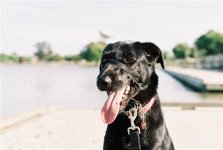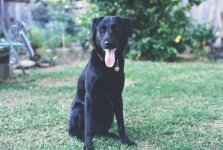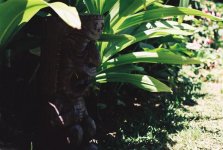mgilbuena
San Francisco Bay Area
I recently purchased a completely manual and lightmeterless M4-P. Coupled with a Nokton 50mm F/1.1 lens, I shot a test roll of Kodak Gold 200 and got the results back last night. I am using the sunny 16 rule.
I have a lot of learning to do.
Firstly, about halfway through the roll, I forgot I was shooting with 200 film and began metering for 100. Oops. I'm not sure if the overexposures are strictly the result of being 1 stop over on film speed alone..
Secondly, I've been incredibly challenged to determine the best way to meter a scene. I've attempted to shoot some difficult lighting (hard shadows) to simply see what the results would be.
R1-11A: This is a photo of my black dog, 6 PM, shot at I believe at f/5.6, 1/1000. Clear blue skies. Side lighting sun from right. How would you have metered this for correct exposure?
R1-2A: This is just before sunset, No shadows. I believe 1/250 at 1.4. This one seems to be a proper exposure.
R1-8A: Noon sun, shot at f/11, 1/250. I was attempting to expose for the Tiki statue in the dark shadows. How would you exposure this picture? (Yes, I know this time of day should be avoided).
Thanks for any guidance.
EDIT: Corrected R1-8A to read f/11, 1/250
I have a lot of learning to do.
Firstly, about halfway through the roll, I forgot I was shooting with 200 film and began metering for 100. Oops. I'm not sure if the overexposures are strictly the result of being 1 stop over on film speed alone..
Secondly, I've been incredibly challenged to determine the best way to meter a scene. I've attempted to shoot some difficult lighting (hard shadows) to simply see what the results would be.
R1-11A: This is a photo of my black dog, 6 PM, shot at I believe at f/5.6, 1/1000. Clear blue skies. Side lighting sun from right. How would you have metered this for correct exposure?
R1-2A: This is just before sunset, No shadows. I believe 1/250 at 1.4. This one seems to be a proper exposure.
R1-8A: Noon sun, shot at f/11, 1/250. I was attempting to expose for the Tiki statue in the dark shadows. How would you exposure this picture? (Yes, I know this time of day should be avoided).
Thanks for any guidance.
EDIT: Corrected R1-8A to read f/11, 1/250
Attachments
Last edited:




